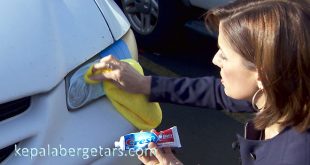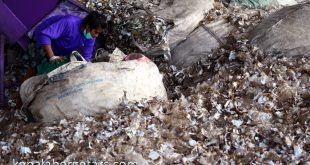A brand new vest that offers medical dummies a extra female physique has been developed to assist individuals being skilled in cardiopulmonary resuscitation (CPR) higher assist feminine victims whose hearts have stopped and enhance their likelihood of survival. Historically, CPR coaching is taught with manikins with a male physique. Rescuers is probably not as conversant in performing CPR on girls, stated the Singapore Coronary heart Basis (SHF), which developed the manikin vest. Some additionally hesitate to carry out chest compressions on girls for concern of being accused of molestation in the event that they contact a feminine affected person‘s breasts. Likewise, worries about outrage of modesty could cease them from utilizing an automatic exterior defibrillator (AED) to revive a girl. SHF board member Chee Tek Siong stated such worries could lead rescuers to putting their arms too low on the chest, under a girl‘s bust-line, which can trigger accidents when performing chest compressions throughout CPR.
However the feminine manikin vest may help familiarise first-aiders with the place to appropriately place their arms on a girl‘s chest – on the decrease half of the sternum, identical to for males. Trainees can even discover ways to paste AED pads with out unnecessarily exposing a girl‘s chest. With out intervention, an individual‘s probabilities of survival drops by 10 per cent for each minute that passes after cardiac arrest. Dr Chee stated: “You probably have a manikin that appears like a feminine, you may practise on it and you will be extra assured.
” The manikin vests have been distributed beginning yesterday, which was Nationwide Life Saving Day, and will likely be issued to 60 CPR and AED coaching centres. The variety of out-of-hospital cardiac arrest circumstances in Singapore has been growing and is now at about 3,000 a 12 months, stated the Well being Ministry’s Unit for Pre-Hospital Emergency Care (Upec). That is as a result of nation‘s quickly ageing inhabitants and an increase in persistent illnesses – diabetes, hypertension and coronary heart circumstances – that enhance the chance of cardiac arrest.
However the variety of bystander CPR carried out has additionally elevated – from 22 per cent in 2011 to 61.eight per cent in 2018. Professor Marcus Ong, the medical director of Upec, attributes this to the dispatcher-assisted CPR programme launched in 2012 – the place somebody who calls 995 when witnessing an individual struggling cardiac arrest is guided by the dispatcher over the cellphone on performing chest compressions. In mild of Covid-19, Prof Ong additionally stated Singapore’s emergency providers will instruct individuals to carry out “hands-only” CPR and never mouth-to-mouth resuscitation.
 Kepala Bergetar Tonton dan Download Drama Melayu Live Filem Malay Video
Kepala Bergetar Tonton dan Download Drama Melayu Live Filem Malay Video


